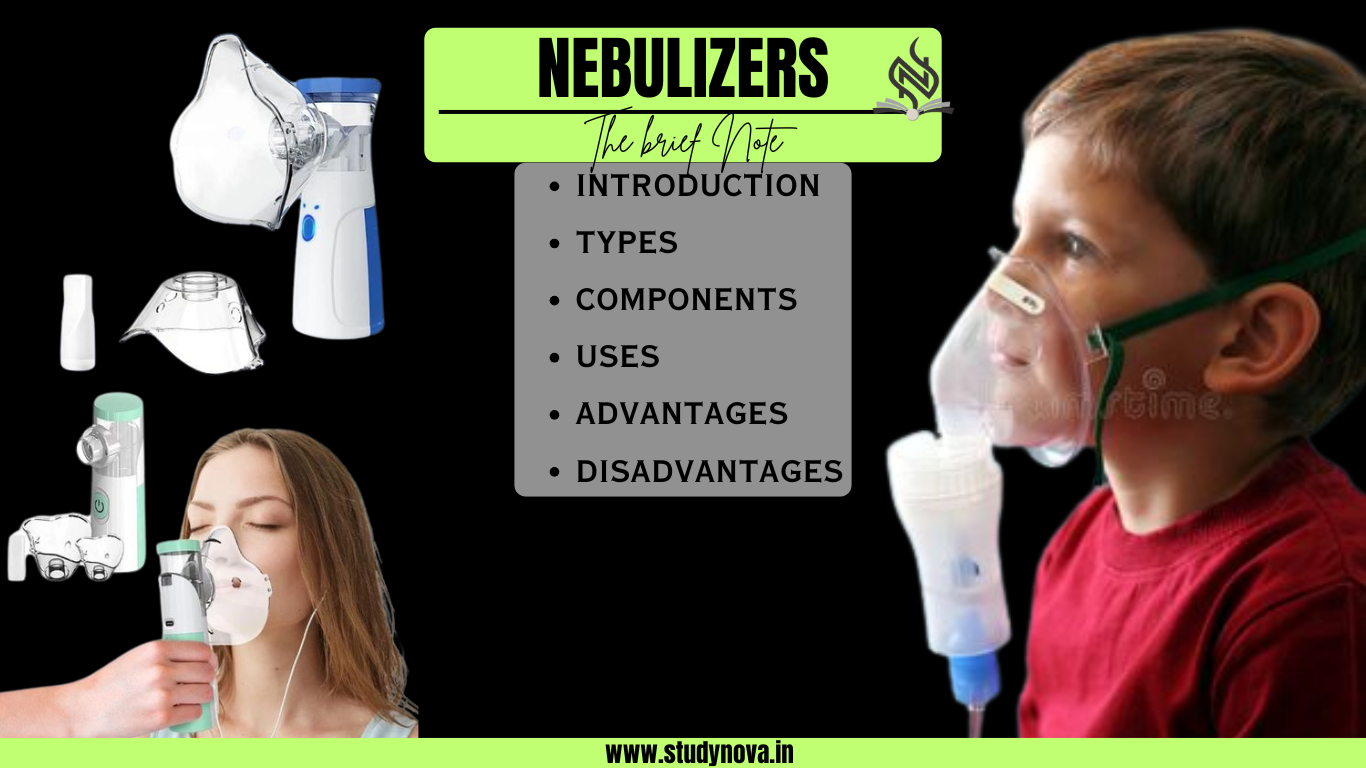A nebulizer is a device that converts liquid medication into a fine mist, allowing it to be inhaled directly into the lungs. This method of drug delivery is widely used for treating respiratory diseases and is particularly effective for patients who struggle with other inhalation devices such as metered-dose inhalers (MDIs) or dry powder inhalers (DPIs).
Nebulizers play a vital role in respiratory therapy by providing effective and direct delivery of medications, making them indispensable for patients with chronic and acute respiratory conditions.
Table of Contents
ToggleComponents of a Nebulizer System
Compressor Unit:
- Generates the air pressure or vibrations needed to turn liquid medication into a mist.
- Typically powered by electricity or batteries.
- Size varies: tabletop models for home use and portable models for travel.
Medication Cup:
- Holds the prescribed liquid medication.
- Often made of plastic and designed to be easily detachable for cleaning.
Mask or Mouthpiece:
- Mask: Covers the nose and mouth, suitable for children or individuals unable to use a mouthpiece.
- Mouthpiece: Used for more targeted delivery, suitable for cooperative adults and older children.
Tubing:
- Connects the compressor to the medication cup.
- Ensures the flow of air or ultrasonic waves for aerosol generation.
Filter:
- Prevents contaminants from entering the system.
- Requires regular replacement to maintain optimal performance.

Types of Nebulizers
- Jet Nebulizers:
- Use compressed air to create an aerosol.
- Widely available and cost-effective.
- Slightly noisy due to the air compressor.
- Ultrasonic Nebulizers:
- Utilize high-frequency sound waves to produce a mist.
- Quieter and faster than jet nebulizers.
- Not suitable for all medications, as ultrasonic energy can degrade certain drugs.
- Vibrating Mesh Nebulizers:
- Use a mesh with microscopic holes to produce a fine mist.
- Compact, efficient, and silent.
- More expensive but highly effective for precise medication delivery.

How to Use a Nebulizer
1.Preparation:
- Wash your hands thoroughly to prevent contamination.
- Assemble the nebulizer components as per the manufacturer’s instructions.
- Measure the prescribed dose of medication using a sterile dropper or syringe and pour it into the medication cup.
2. Setup:
- Connect the medication cup to the mouthpiece or mask.
- Attach the tubing to both the compressor and the medication cup.
3. Inhalation:
- Turn on the nebulizer.
- Sit upright to allow optimal lung expansion.
- If using a mouthpiece, seal your lips around it; if using a mask, ensure it fits snugly over your nose and mouth.
- Breathe in and out slowly and deeply through the device until the medication is completely nebulized (usually 10–15 minutes).
4. After Use:
- Turn off the nebulizer and disconnect the parts.
- Wash the medication cup, mouthpiece, or mask with warm soapy water and rinse thoroughly.
- Allow all components to air-dry completely.
Cleaning and Maintenance of Nebulizers
Daily Cleaning:
- After each use, wash all detachable parts (except the tubing and compressor) with warm soapy water.
- Rinse thoroughly to remove soap residue and let them air-dry..
Disinfection (Weekly):
- Soak the medication cup, mask, and mouthpiece in a solution of one part vinegar to three parts water for 20 minutes.
- Rinse thoroughly and let air-dry.
Tubing:
- Wipe the exterior with a damp cloth; replace as per the manufacturer’s guidelines or if it shows signs of wear.
Compressor:
- Clean the exterior with a damp cloth.
- Replace filters periodically (as recommended by the manufacturer).
Advantages of Nebulizers
- Suitable for all age groups, including infants and elderly patients.
- Delivers medication directly to the lungs, ensuring faster onset of action.
- Ideal for delivering multiple types of medication simultaneously.
- Effective for patients with severe respiratory distress or difficulty coordinating inhalation with other devices.
Disadvantages of Nebulizers
- Bulky and less portable compared to inhalers.
- Noisier (jet nebulizers in particular) and slower than some inhaler options.
- Requires regular cleaning and maintenance to prevent bacterial growth.
- Higher cost, especially for vibrating mesh nebulizers.
Common Indications for Use
- Asthma management during exacerbations.
- Chronic obstructive pulmonary disease (COPD).
- Cystic fibrosis.
- Respiratory infections, such as pneumonia or bronchitis.
- Bronchiectasis.
- Post-surgical lung conditions requiring mucus clearance.
Special Considerations
- Always consult a healthcare provider for the correct type of nebulizer and medication.
- Ensure proper technique for effective drug delivery.
- Monitor for potential side effects, such as increased heart rate with bronchodilators.




